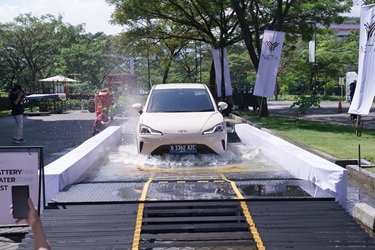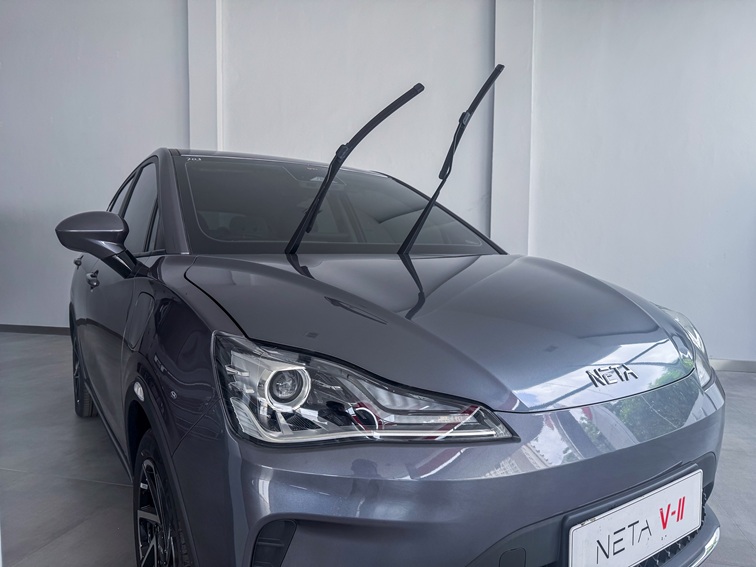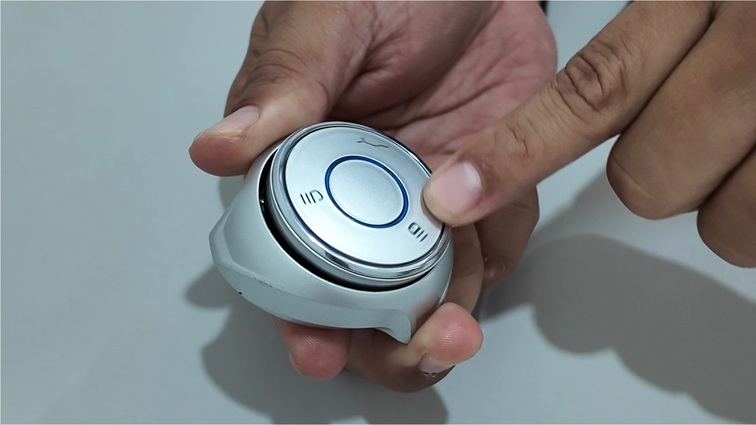
Driving Tips When Your Electric Vehicle Passes Through Water or Gets Flooded
07 March 2025


Jakarta, March 7, 2025 – Electric vehicles (EVs) have increasingly become a popular choice for daily commuting, whether for city travel or intercity trips. A variety of EV models offer numerous advantages, from futuristic designs to advanced technology providing comfort and safety features. However, with the increasing frequency of rain and the potential for flooding in certain areas, NETA offers several important tips for drivers navigating through water or flooded areas to ensure the safety of both the vehicle and the driver. Here are some key points to consider for electric vehicle owners when driving through water or if the vehicle has already been flooded.
When Your Electric Vehicle Passes Through Water:
Ensure the Water Level Does Not Exceed Half the Tire's Height
Before driving through water, make sure the water level does not exceed half the height of the tire. If the water is deeper, it is advisable to find a safer route.
Drive Below 10 km/h
Drivers are advised to reduce their speed to below 10 km/h when driving through water to avoid damaging the vehicle and ensure the safety of themselves and other road users.
Do Not Stop for More Than 30 Minutes When Stuck in Traffic
If your vehicle gets stuck in traffic in a flooded area, make sure to avoid stopping for more than 30 minutes. If the situation lasts longer, the driver should take safe actions, such as finding a secure spot to stop or carefully continuing the journey.
If Your Electric Vehicle Gets Flooded:
If the vehicle gets submerged in floodwater, the following steps should be taken immediately:
Do Not Start Your Electric Vehicle
Do not attempt to start your electric vehicle if it has been submerged in water. Allow the vehicle to dry completely first. Afterward, the vehicle should be taken to an authorized service center for further inspection to avoid more severe damage.
Manually Release the Parking Brake
Ensure that the parking brake is manually released, as the vehicle should not be started at all if it has been exposed to water and is not completely dry.
Januar Eka Sapta, Senior Manager of After Sales at PT NETA Auto Indonesia, adds, "The key point is that the vehicle must remain off or not be started during the evacuation process, especially for electric vehicles. This is crucial because if an electric vehicle is submerged, the risk of damage to the electrical system and further vehicle damage increases significantly if the vehicle is powered on. Therefore, it is essential to ensure that the vehicle is not turned on at all after being exposed to water to avoid further damage."
By following these tips, your driving experience will not only be safer and more comfortable but also better prepared for any road conditions, weather, and situations when floods impact your electric vehicle. It is also important to stay informed about flood-affected areas before driving.
See Other News

The Correct Way to Position the Wipers on the NETA V-II for Windshield Cleaning or Routine Maintenance
Date: 13 November 2025

The Correct Way to Change the NETA V-II Key Fob Battery
Date: 31 October 2025

NETA Hosts Customer Gathering with Mini Soccer Event
Date: 17 October 2025

